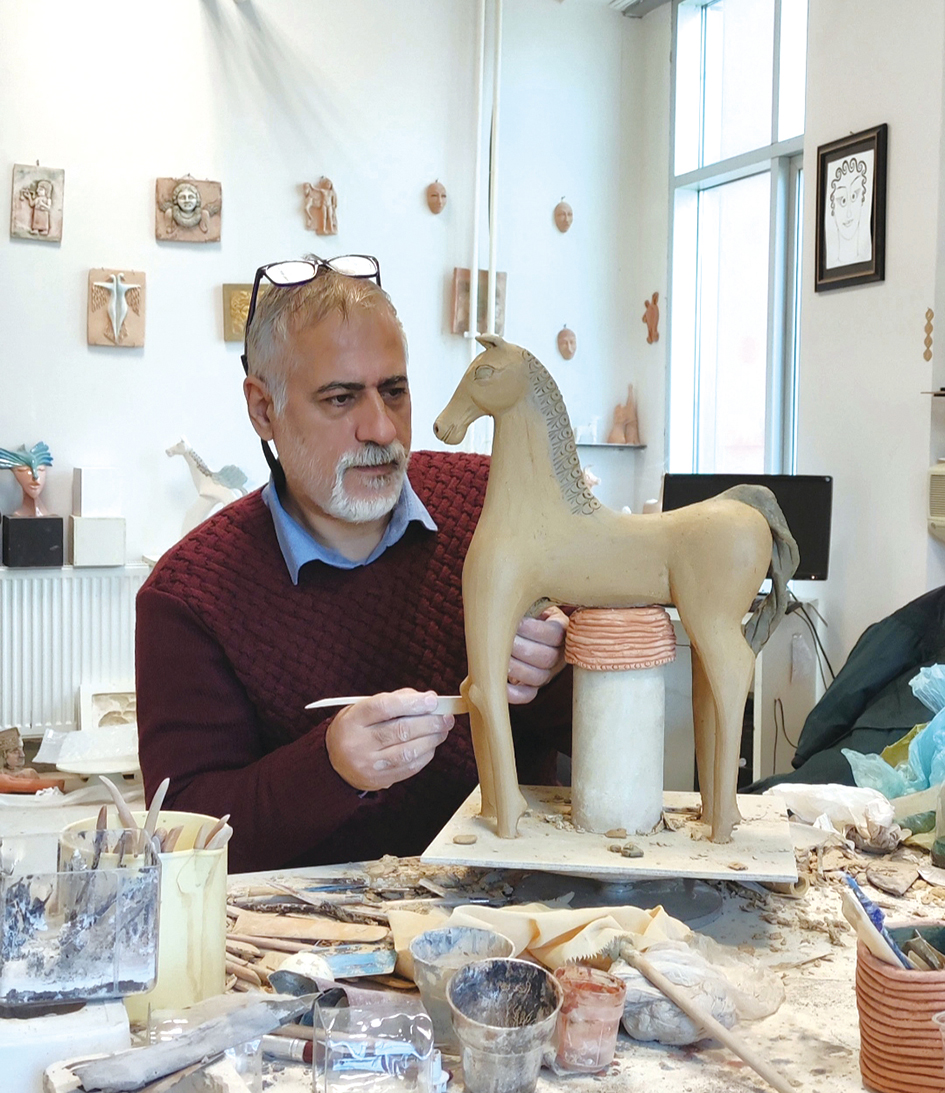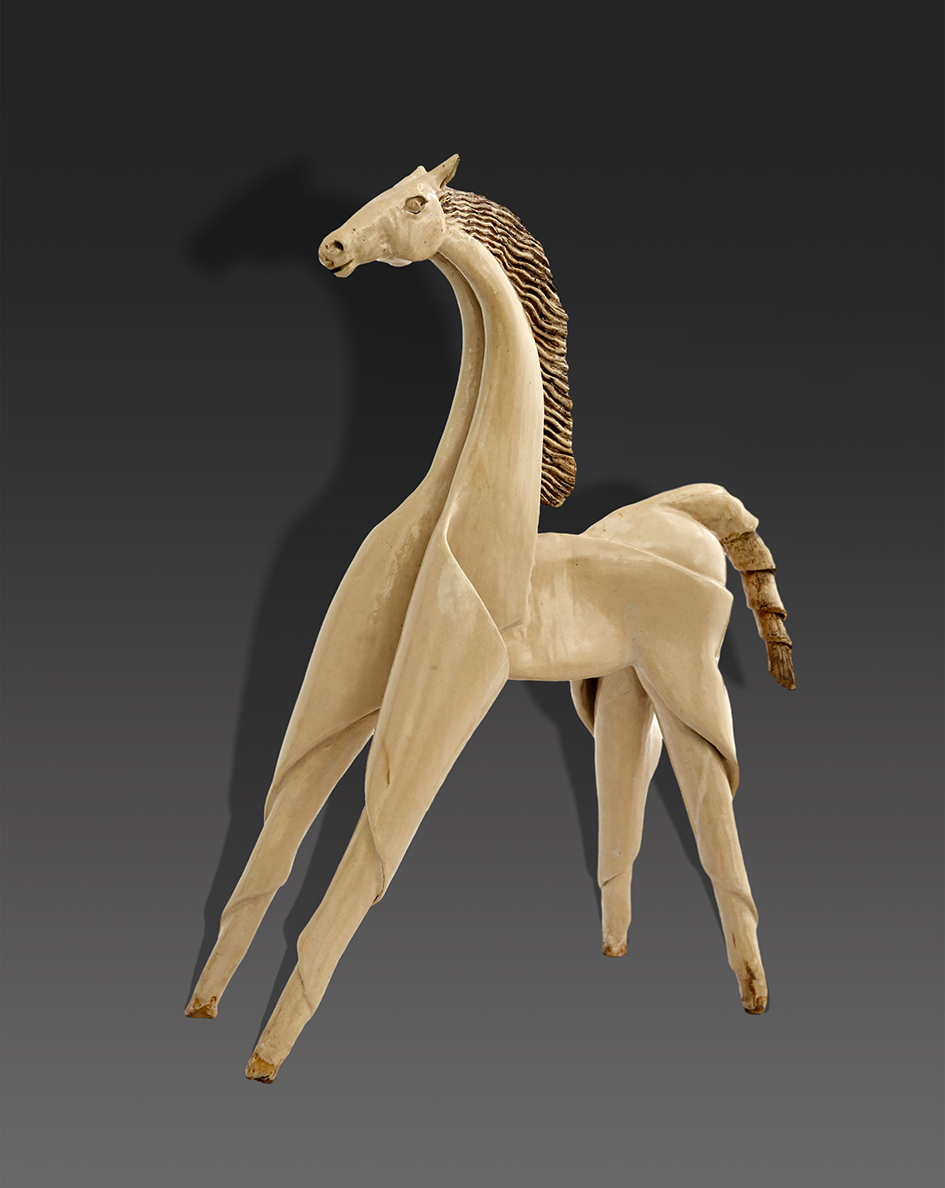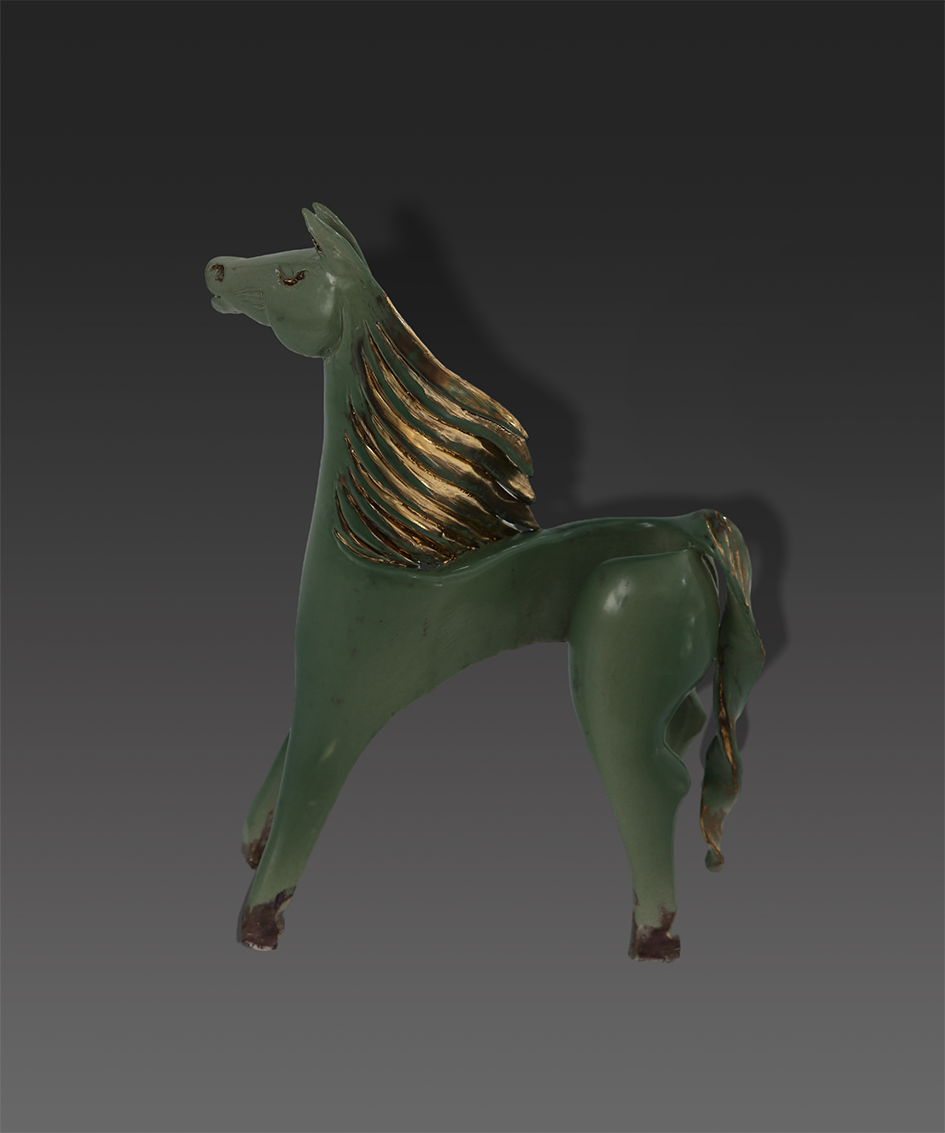
Mehmet Çelik is a Turkish ceramist and university professor who has taught and created ceramics for many years. His artworks have won honorary, special jury, and institutional awards in the Izmir Rotating Golden Tray Ceramic Competition. He has also been invited to participate in various ceramic competitions and exhibitions.


In the creation lineage of Turkish ceramist Mehmet Çelik, Horse and Horse IV form a timeless duet—clay as canvas, flame as ink—composing a narrative of humanity’s eternal fascination with the horse through the interplay of traditional forms and modern expression. These two pieces are not isolated works of art, but contemporary deconstructions of the “divine essence of the horse” rooted in Anatolian civilization. Horse, with its full-bodied form, conveys the agrarian civilization’s awe of strength. The curve of its torso echoes the shaping traditions of Ottoman ceramics, while the splashed glaze along its mane resembles the molten hues of a highland sunset coursing through its veins. In contrast, Horse IV reconstructs equine form through geometric lines, like the tent motifs of nomadic tribes reborn in abstract modernity.
Çelik’s artistic ingenuity lies in creating a mirrored contrast between the two works. While Horse continues the majesty of warhorses seen in miniature paintings, with a slightly raised head exuding dignity, Horse IV breaks the constraints of realism through minimalist combinations of triangles and arcs. The poised body of Horse embodies the Turkish proverb that speaks of “silence like the earth and galloping like thunder,” while Horse IV captures the mythic moment of a horse “galloping through the wind and clouds,” defying the laws of gravity. This evolution from figuration to abstraction is not a rejection of tradition but a translation of the spiritual core of Anatolian ceramics—its worship of life’s vitality and its yearning for freedom—into distinct artistic languages.
In the dialogue between glaze and texture, the two works offer more profound revelations: they are twin tributes to Anatolian soil, embodying strength and freedom as two sides of the same coin. Through clay, Çelik reminds us that the divinity of the horse lies not in the replication of its form, but in its dual nature as a symbol of life: As Horse embodies the awakening of power bound to the land, Horse IV captures the preservation of lightness of spirit amid constraint. It recalls the Turkish folk tale of the horse “that could hear the whispers of the stars,” whispering to modern viewers in the language of ceramics: in an industrial age that compresses life into standardized modules, only by being like the horse—drawing strength from traditional roots while keeping the posture of running beneath a spiritual sky—can the soul truly possess its dimension of galloping between the earth and the clouds. Ultimately, what is forged of these two pieces is the eternal human longing for the authentic state of being, where we possess both the strength to shatter the stars and the luminous freedom to pierce through clay.